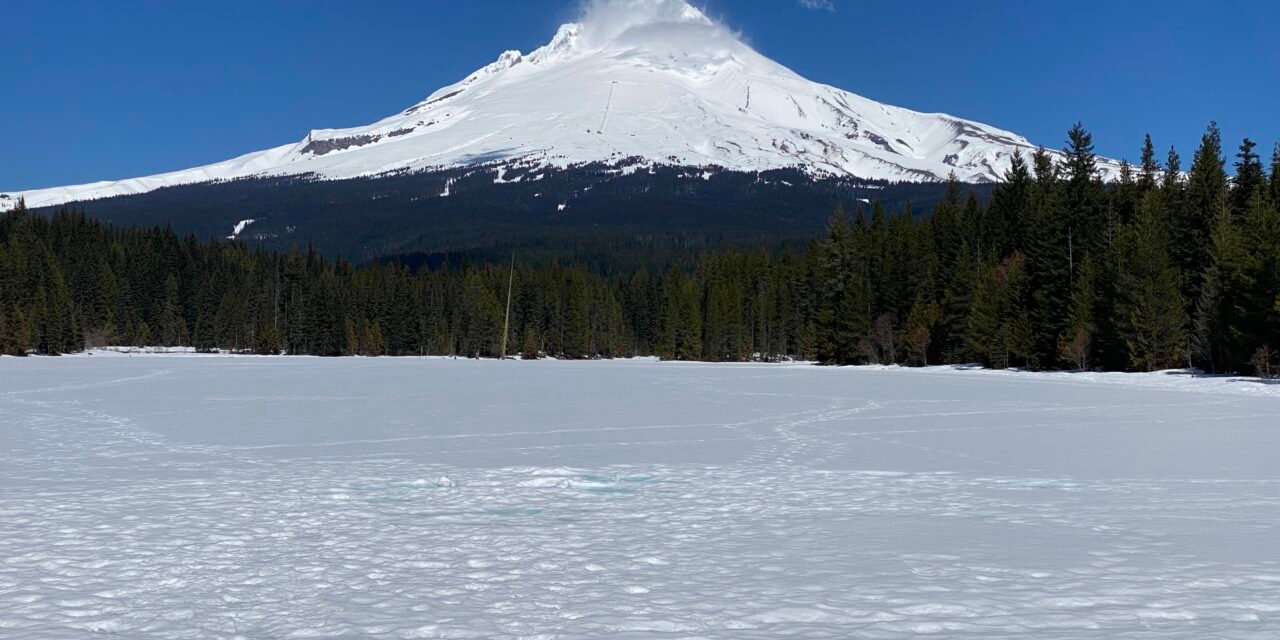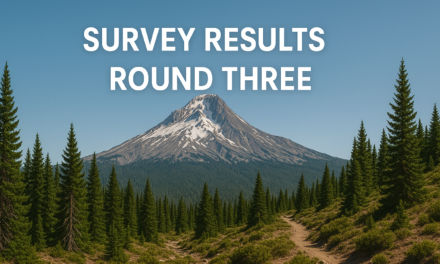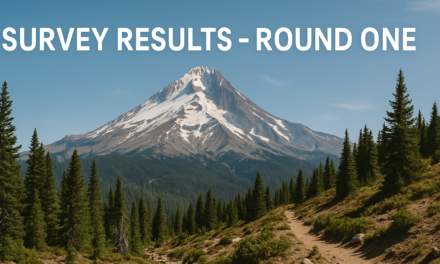This is the final set of data from the 2023 Timberline Trail survey results. You can read the results for the first two sets of data:
On to the final set of data results from the 2023 Timberline Trail survey!
Did you complete your hike as planned?

For the vast majority of hikers, their trip went as planned. For about 7% some issues occurred that were not planned. We will take a look at some of these in a short while.
This is an improvement on last year where 10% had some unplanned incident. Perhaps this is an indication of better planning?

Perhaps the hardest decision to make on a hike that takes some preparation is whether to leave the trail early. This could be for a variety of reasons. However, often leaving the trail is a wise decision rather than pushing on and potentially making a situation worse.
Just over 15% of hikers decided to leave the trail early for some reason. This is a slight decrease from last year. On the Timberline Trail, there are several good exit points all around the mountain – however, some of these can leave you at a trailhead that is a long way from where you started. Trailheads on the northern side of Mount Hood can be particularly remote – Vista Ridge and Elk Cove.
This year just 1 person (less than 1%) had to call SAR, last year the number was just around 3% of hikers had to call either SAR or other emergency services. And although distressing, calling SAR early rather than creating a more difficult situation is always a good approach. It’s important to remember that on Mount Hood there is no charge for a SAR callout – although if you are transported from the trailhead to a medical facility by a private service then, of course, there is.
Did you have any of the following problems?

What were the most common problems that hikers had? Luckily there were not many moderate or major issues reported. Amongst the most common complaints were mild issues with blisters, foot and knee pain. Foot and knee pain also lead the group in terms of moderate issues. Overall there was a slight increase in issues, albeit mild and moderate, over last year. With increases in blisters and knee pain.
Luckily there were very few major issues reported. These can be debilitating and again include blisters and lower leg issues. Unfortunately, there was one major injury reported.
Within this section of problems that caused hikers’ problems, there was also a comment section for other comments. In terms of other issues that were reported, these were the most common:
- Scratches and bruises from falls
- Cramps
- Nausea
- Flare-ups of old injuries
- Mild altitude sickness
- General soreness
Some questions on camping etiquette?

As the Timberline Trail gets busier, and backpacking becomes more popular, good trail etiquette can help make the experience more pleasant for all hikers, as well as ensure the trail stays in good condition for years to come. Overall the results for this year are encouraging, with more people reporting ‘most of the time’ or ‘all of time’ for these.
Looking at each of these:
- Filter Water – by now most hikers are aware of the recommendation to filter water. Admittedly this question could be clearer to state any type of water treatment – even so, I am surprised that the answer to this question is not closer to everyone filtering their water. There are some locations where I would be less worried – for example in the High Sierra – however, there are fewer locations around Mount Hood where I would be comfortable without filtering water.
- Wash Hands – a very reliable hiking expert (Inga Aksamit) would be somewhat shocked by this result. Her recommendation is to always wash hands before eating. As last year this is the most hit or miss of the answers. Interesting that gastro-intestinal problems are relatively low (maybe they could be lower) and are also unchanged from last year.
- Camping on durable services – this is one of the principles of LNT. As are the rest of the questions in this category. Generally, there are plenty of durable surfaces around Mount Hood to camp on. Although hikers did find it harder to find tent sites this year. Often meandering a little way off the trail can also find some great campsites on durable surfaces.
- Camp at least 100′ from water – often there are established campsites that are closer to water and this could account for camping closer to water, rather than establishing a new campsite
- Bury Waste – there has been increasing concern around Mount Hood, and in many of the other areas, about the increase in human waste and toilet paper ‘blooms’. For the benefit of all hikers, folks should be looking to bury their waste and their TP (if they are not going to carry it out) at least 6″ deep. No hiker wants to come across human waste on the trail.
This section is particularly close to my heart. This year I will be out on the Timberline Trail often in my role as a Wilderness Ambassador with the Trailkeepers of Oregon.
Did you bury or carry out your TP?
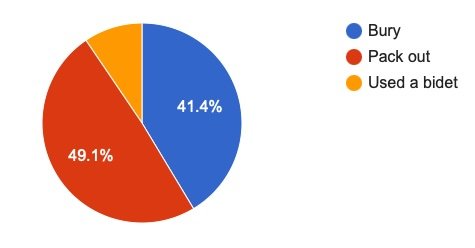
Following on from the question above, it is refreshing to see so many people carrying out their TP. In some hiking areas, this is already mandatory and I can see this trend continuing over time as backpacking increases in popularity. Personally, I am a big fan of the backcountry bidet and glad to see its use by almost 10% of the hikers.
In a very positive trend the number of hikers carrying out the TP has increased from about 41% to 49% over last year. Whereas last year the majority where burying, this year the largest category are carrying their TP out. The use of back country bidets remains pretty constant at 9%.
How was finding a campsite?

Maybe the trail is getting busier. This year more people reported difficulty finding a camp site. For the first time around 4% reported that they “often had a problem” and the number that sometimes had a problem grew from about 15% to almost 30%. There are some very popular places on the Timber Trail, but usually if you go a little further, you can find a durable surface to camp on.
Into the home stretch – the last set of questions were all demographic questions. Let’s see who it was who hiked the trail this year.
Demographics Questions
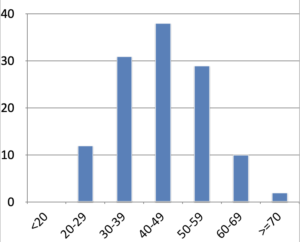
Very similar age demographic as last year with 40-49 being the most popular group. I often see a lot of younger hikers on the Timberline Trail and again I feel they are under represented in the survey results. I still assume a lot of this is how I reach out to the hikers and the fact that Facebook (which is the main social media I use) is just not well used by younger hikers.
The oldest hiker this year was 76 – so many of us still have ample opportunity to get a few more circuits in!
The next question is one I revised from last year. The gender question had more feedback than any other some I modified the question to include other gender identities.
What is your gender?

This year there was almost the reverse of last year. Over half of the reporting hikers were female this year with almost exactly the same percentage that last year reported as male.
What is your race?
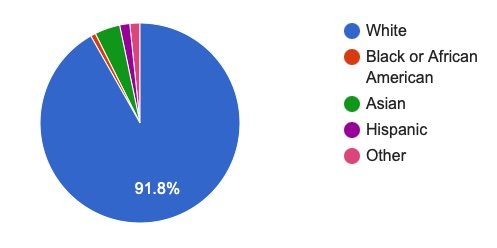
The primary reason that I asked the question about race is that there is an ongoing discussion about inclusivity in outdoor recreation. Indeed recently Mount Hood National Forest proposed to increase certain fees associated with both climbing Mount Hood and several of the recreation sites around Mount Hood. This led to an interesting conversation in one of their town hall meetings as to what impact this would have on inclusivity. This year the percentage of none white hikers grew by about 6% over last year.
Are you from the US?
It’s no surprise that the majority of hikers are from the US. 1 reported to be from outside of the US. From those who came from the US, there was also a tendency for them to be from the local area, although the Timberline Trail attracted hikers from all over the US.

And some comments
- I have done the entire trail 4 times now. Twice in August and once in Sept. I do feel like conditions were significantly more dangerous than I had anticipated for this June 16th circuit. The river crossings were NOT an issue, it was the steep sloped snowfields that made it treacherous.
- Amazing trail. Loved it. Painful at this time of year, however. Would be much more enjoyable having it clear, especially given downed trees.
- This trail is no joke. Make sure you are ready to go up and down. Cross logs and rivers. Lots of sun exposure in the burn areas…. Make sure to know when you need to carry lots of water and when it’s ok to carry minimal. FarOut app worked great for information $9.99 for the Timberline trail. You could see elevation, gain and loss… water, and possible campsites. It is a fun trail with lots of views of Mount Hood and surrounding mountains.
- It was much harder than I anticipated. I have done a lot of backpacking (mostly from MN) and I struggled with the ups and downs. Knarly (sic) ridge was also super hot and hard.
- It’s an awesome trail!
- Really great trail. Wish it wasn’t so busy. Sometimes I felt like I couldn’t stop to enjoy the hike because I had to hurry to get to a campsite before they were all taken.
- It was more rugged than I expected in places. It was more difficult than expected.
- Enjoyed a wonderful night camped other hikers not in our group at the Cooper Spur shelter. We shared stories, laughs and food. Was delightful. This memory sticks with me.
- The trail is in good condition! I didn’t think the scrambles down into Elliot (sic) or newton etc were that bad
- I thought it was fantastic experience. I cant wait to do it again.
- The climb out of the Elliot was extremely dangerous and will prevent me from ever doing the hike again.
And finally…
Thank you to everyone who answered the Timberline Trail survey! I hope to keep this up in the years moving forward so that I can also look at trend data. There was some excellent feedback on how to improve the survey in future years – thanks for that.
And that concludes the 2023 Timberline Trail survey results!

